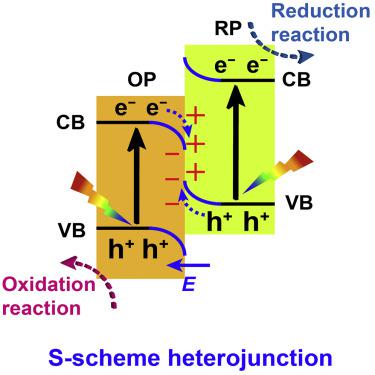Chem ( IF 19.1 ) Pub Date : 2020-06-26 , DOI: 10.1016/j.chempr.2020.06.010 Quanlong Xu , Liuyang Zhang , Bei Cheng , Jiajie Fan , Jiaguo Yu

|
The significance of photocatalysts is unquestionable, and scientists are devoted to improving their photocatalytic efficiency. To solve the high recombination rates of photogenerated electron-hole pairs and their low reduction and oxidation abilities in a single photocatalyst, heterojunction manipulation is urgently required. Two mainstream heterojunctions—type-II and Z-scheme heterojunctions—have been widely acknowledged. However, we soberly reflect the charge-transfer mechanism from many perspectives and are finally aware of the fundamental challenges they face. To ensure a correct understanding, it is necessary to share our analysis with others. Moreover, step-scheme (S-scheme) heterojunctions, consisting of a reduction photocatalyst and an oxidation photocatalyst with staggered band structure, are introduced to avoid misinterpretation. The differences in the charge-transfer mechanism between S-scheme, type-II, and Z-scheme heterojunctions are highlighted. Finally, limitations and the future research direction of S-scheme photocatalysts are discussed.
中文翻译:

S型异质结光催化剂
光催化剂的意义是毋庸置疑的,科学家致力于提高其光催化效率。为了解决在单个光催化剂中光生电子-空穴对的高重组率及其低还原和氧化能力,迫切需要异质结操作。两种主流的异质结(II型和Z型异质结)已得到广泛认可。但是,我们从许多角度清醒地反映了电荷转移机制,并最终意识到它们所面临的基本挑战。为了确保正确理解,有必要与他人分享我们的分析。此外,引入了步式(S-方案)异质结,其由具有交错带结构的还原光催化剂和氧化光催化剂组成,以避免误解。突出了S型,II型和Z型异质结之间电荷转移机制的差异。最后,讨论了S型光催化剂的局限性和未来的研究方向。











































 京公网安备 11010802027423号
京公网安备 11010802027423号